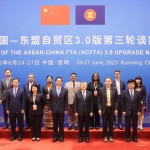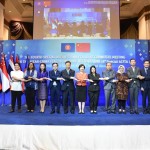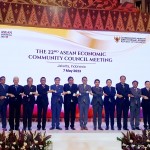Tổng số bài đăng 463.
 In view of the important contributions of investment capital to the local economy, Vietnam needs immediate solutions to attract more FDI and strengthen its sources, according to experts.
In view of the important contributions of investment capital to the local economy, Vietnam needs immediate solutions to attract more FDI and strengthen its sources, according to experts.
According to data, after 35 years of implementing the open-door policy to attract FDI, up to now, Vietnam has received investment from 140 countries and territories around the world.
Foreign capital flows have been present in most localities in the country with projects invested by big global names such as Intel, Microsoft, Foxconn, Samsung, Sanyo, Sony, Fujitsu, Toshiba, and Panasonic.
Depicting a full picture of the situation in Vietnam, the annual report on foreign investment in Vietnam in 2021 by the Association of Foreign Investment Enterprises (VAFIE) published recently highlights encouraging results.
The report said: "FDI enterprises account for about 25 percent of total social investment capital, 55 percent of total industrial production value, and more than 70 percent of export turnover."
It said this proved the local business and investment environment was increasingly improving, making foreign investors believe in the success of doing business in Vietnam by adjusting investment capital to expand the business and increase profits.
Notably, foreign investors' capital contribution and share purchase activities in Vietnam have been very active in the past 10 years, accounting for a high proportion of registered and realised FDI.
In 2021, the value of business mergers and acquisitions will reach 12 billion USD, up 150 percent compared to 2020, equivalent to the record set in 2017 of 13.4 billion USD, despite the context investment environment and the world changed dramatically due to the impact of the pandemic.
In addition, non-equity investment (NEM) was becoming a new investment method in Vietnam, such as with the two investment deals of Vingroup in Vinfast and Vinsmart brands.
Nguyen Mai, President of VAFIE, said this form of investment allowed multinational corporations to coordinate product supply chain activities, creating opportunities for domestic manufacturers and suppliers to join the global supply chain.
Mai said the resources of foreign investors often included the provision of trademarks, intellectual property rights, and business know-how, which could be an investment trend to increase profit margins through finding potential markets without capital contribution.
At the same time, International Investment Research Company Limited (ISC) published the FDI Annual Report 2021, which analysed the inadequacies and limitations in FDI attraction and made many recommendations to send to investors and policymakers.
Phan Huu Thang, chairman of the Report Compiling Council and former Director of the Foreign Investment Agency from the Ministry of Planning and Investment, told local media: "The current problems in attracting FDI are not new."
Thang also mentioned the role of FDI in GDP growth was increasingly important, adding the proportion of total export turnover, budget contributions, job creation, spillover of productivity and technology and supporting industry development from them was high.
However, he also mentioned the limitations of foreign capital inflows, which were reflected in the low quality and efficiency of FDI attraction and use, saying: "The number of projects with advanced and modern technology and European technology was only about 5 percent; there is an imbalance in the attraction and use of FDI in the area; linkages and interactions between the FDI sector and other sectors of the economy are not tight, the spillover effects on productivity and technology are not high."
"The disadvantages in attracting and using FDI have been slowly overcome, affecting economic development, social order and national defence-security."
Thang said these limitations had many causes, but the most basic was that institutions and policies on FDI had not kept pace with development requirements.
He added: "In the coming time, it is necessary to continue to improve institutions and laws on FDI attraction to improve the quality and efficiency of attracting and using foreign investment capital."
He said at the same time that it was necessary for the active, robust, synchronous and substantive participation of ministries, branches and localities to create a fair, open and transparent business and investment environment.
He and his colleagues emphasised the solution to monitoring and evaluating FDI projects, especially the status of "hidden" investment in the form of individual investors in Vietnam. In some cases, they could set up a real estate business with a capital contribution of less than 49 percent, lending money to Vietnamese individuals to set up businesses.
He said speeding up the progress of building and perfecting the national information system on foreign investment to have an efficient database of information to seriously and accurately evaluate the efficiency of FDI in Vietnam was a solution.
Given that the institutions and laws related to foreign investment were incomplete, overlapping, and not strictly enforced, some foreign investors took advantage of legal loopholes to exploit hidden investments in the industries and fields where FDI was limited.
VAFIE said: "It is necessary to continue to improve institutions and laws related to FDI, including the policy of applying a global minimum tax in Vietnam."
In addition, there should be solutions to improve the efficiency of attracting and using FDI by enhancing the investment and business environment, reviewing the investment policy system, supporting investors to remove difficulties, strengthening the state management of FDI from the stage of project promotion, appraisal and implementation to the stage of inspection and supervision of implementation.
VAFIE recommended that the Government soon issue a decision on the set of criteria to evaluate the effectiveness of the FDI sector. The evaluation criteria under construction include 26 specific economic, social, environmental, technological indicators, all serving as a basis for foreign investors to self-score and for project screening by localities to receive investment./.
Source: VNA












